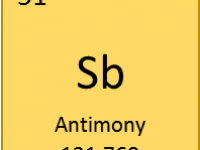Arsenic
What is Arsenic? Arsenic is the 33rd element of the periodic table and it’s a brittle, steel-gray metalloid. However, it has two other allotropic forms which are yellow and black. Arsenic’s classification as a metalloid means it has properties in between those of metals and solid nonmetals. We’ll go more into those interesting properties later. Arsenic is commonly used in wood preservation and ins... »

